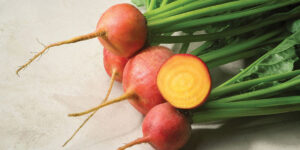
Transplanting ‘Dulce Nectar’ Honeydew Melon in Open Land
1. Transplanting
- Choose a sunny, well-drained location with fertile soil. Honeydew melons thrive in warm conditions.
- Space the plants about 90-120 cm apart in rows that are approximately 1.5-2 meters apart.
- Water the plants thoroughly after transplanting to establish them.
2. Land Management
- Maintain consistent soil moisture, especially during fruit set and growth. Avoid overwatering to prevent root rot.
- Apply mulch around plants to retain soil moisture, suppress weeds, and regulate soil temperature.
- Optionally, use black plastic mulch to warm the soil and speed up growth.
3. Pest and Disease Control
- Regularly inspect for common melon pests such as aphids and cucumber beetles, and manage them appropriately.
- Implement crop rotation and good sanitation practices to prevent soil-borne diseases.
- Proactively manage fungal diseases, which can be prevalent in melon cultivation.
4. Harvesting
- ‘Dulce Nectar’ honeydew melons typically mature when they emit a subtle fragrance, the blossom end slightly softens, and the skin color changes.
- Harvest by cutting the stem close to the fruit, leaving a small portion of the stem attached.
Best Method for Cultivating ‘Dulce Nectar’ Honeydew Melon
Open Land Cultivation is recommended for ‘Dulce Nectar’ honeydew melons for several reasons:
- Space for Growth: Open land provides the necessary space for the sprawling growth habit of honeydew melon vines.
- Optimal Growing Conditions: This method offers the natural sunlight and pollination that are crucial for the healthy growth of honeydew melons.
- Efficient Water and Nutrient Management: Open land cultivation allows for straightforward watering and feeding, essential for melon development.
- Natural Pest and Disease Management: The increased air circulation in open fields can help reduce the risk of some pests and diseases.
- Cost-Effectiveness: Generally, it involves a lower initial investment and operational costs compared to hydroponic or aquaponic systems.
When deciding on a cultivation method, take into account local environmental conditions, including climate, soil type, and water availability. In areas with limited space or where precision agriculture is preferred, hydroponic systems might be considered.





Reviews
There are no reviews yet.